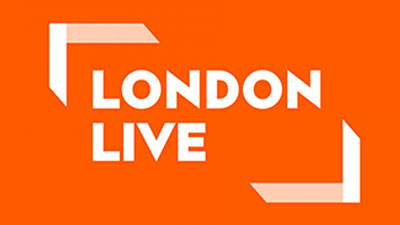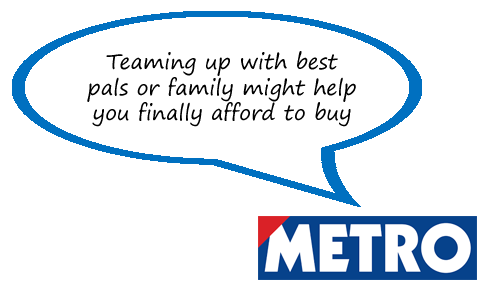A mortgage is a massive commitment and for a first time buyer it can feel like very scary uncharted waters. This guide is aimed at first time buyer mortgage applicants and takes you through everything you need to do to get to have your own mortgage.
Step 1 – Mortgage Affordability Calculator
Do your sums. Find out how much you can afford and how much you are willing to pay towards a mortgage. Be realistic and use our Mortgage Affordability Calculator to work out how much you can afford. When using Share a Mortgage, the cost of sharing a property are reduced as you split the costs with your other Mortgage Buddies.
Step 2 – Check your credit score
Your Credit Score is what a mortgage lender will check before you can get a mortgage. Your credit report takes into account a number of different factors to calculate your credit score, such as, credit available, missed payments, county court judgements (CCJ), bankruptcy orders, places of residence, registration on the Electoral roll.
Even with a bad score you can get a mortgage, although it is unlikely you will get a mortgage from a high street lender. You may only be able to obtain a mortgage from what are known as 'sub-prime' lenders. Those borrowers with adverse credit and CCJs may be charged higher rates by these lenders (historically about 1.5-2% above base rate) to reflect the potentially greater risk of repayments being missed.
These higher rate mortgages are becoming increasingly mainstream and thus competitive, which in turn is slowly bringing rates down. Be aware that sub-prime mortgages often carry large arrangement fees - five or six times higher than high street lenders.
Looking for a free credit report? The main credit reference agencies, Equifax and Experian, provide free credit reports online.
Step 3 – Check your eligibility – What can you be turned down for?

Bad credit history is the biggest but other classic reasons for an application being declined include:
1. Length of employment, ie short amount of time in your current employment
2. Being absent from the electoral roll at your previous address
3. Property value - a surveyor's valuation report shows the property is not worth the sum you're seeking
4. Construction - many mortgage lenders don't like lending on older concrete buildings, for example
5. Location - flats above shops or ex-local authority properties sometimes have difficulties
6. Properties with a short lease
Step 4 – How much deposit do I need?
Ideally between 10% and 15% of the value of the property as this will give you access to the most competitive rates in the market. Lenders typically ask for borrowers to provide a deposit of at least 10%. The greater the deposit you are able to provide, the better access you’ll have to the most competitive rates in the market
The 'magic' 75%
If you're having trouble getting a mortgage, your chances will improve if you can afford to borrow less than 75% of the property value. This is because mortgage lenders have to indemnify themselves against mortgages over this amount. With a 25% or more deposit you are a lot more likely to get a mortgage.
Step 5 – Mortgage application
Well done – if you can afford the mortgage repayments and living costs, have a good credit score, are eligible with a long term job and have a large enough deposit, you can complete a mortgage application.
We can introduce you to the best independent mortgage brokers who can help you sift through the numerous mortgage products on the market to find the best one for your needs.
Most mortgage applications are filled in online and you will be first approved in principle before an final mortgage offer is given. The main headings relate to:
About you
Dependents
Where you currently live
Occupation
Monthly outgoings
Loan commitments
Answer in as much detail as possible and don’t bend the truth. That is mortgage fraud and you can go to jail. Not worth it.
Step 6 – Mortgage approved in principle – Mortgage Valuation & Legal Process
You have now been accepted in principle for a mortgage. You are not quite there, because the bank will now want confirmation on the value of the property and that there are legal issues related to the property.
This is the part which you have no control over. The RICS surveyor will attend the property to make sure the property value is correct. This is not a structural survey; the surveyor merely attends the property to assess the value and to confirm if they notice any issues that they feel need further investigation through a different survey such as a Building Survey, Damp & Timber, Asbestos Report.
Your conveyancing solicitor will act for the mortgage lender to review the property title and report if they find any ambiguities that should stop the lender from lending the money to you. This is complicated and mortgage lenders may take a view not to lend based on information supplied by the conveyancing solicitor.
Step 7 – Mortgage Offer
If you have got your mortgage offer you are now able to get a mortgage and your conveyancing solicitor will draw down the money from the mortgage lender and you can complete on your purchase. The responsibility is now on you to keep mortgage repayments up to date, otherwise your home could be repossessed.
Make sure you get Income Protection Insurance that covers your mortgage repayments should you be unable to work due to illness, accidental injury or redundancy.
Your check list on how to get a First time buyer mortgage
1. Check how much you can afford through our Mortgage Affordability Calculator
2. Get your Credit Report (you can get these free from Experian, Equifax and CallCredit - just follow the directions on one of their websites)
3. Improve your Credit Score
4. Check your eligibility
5. How much deposit can you afford?
6. Now apply for your mortgage - speak to us if you wish to use one of the experienced independent mortgage brokers we work with.
7. Do not apply for any other credit or bank accounts whilst your mortgage application goes through
8. Get your Mortgage Valuation
9. Let your Conveyancing Solicitor handle the legal work
10. Get Income Protection Insurance















